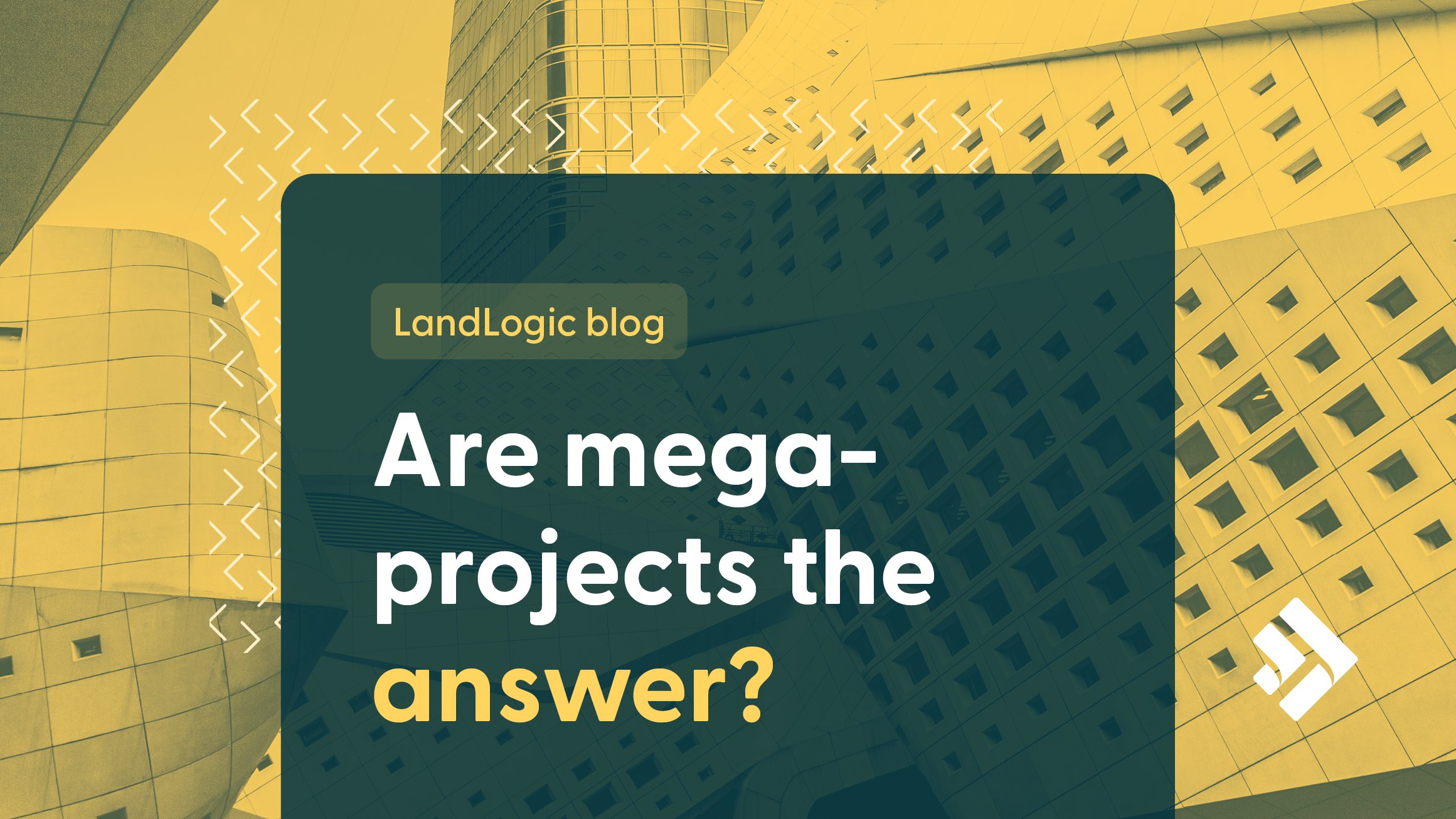Could one mega-project be the answer to Canada's housing crisis?
As Canada grapples with a housing shortage of 3.5 to 5 million homes, the question arises: could the ambitious architectural mega-projects coming out of the Middle East offer an example for solving Canada’s housing crisis?
Projects like the Ziggurat and The Line, designed to house millions within a self-contained technologically advanced ecosystem, inspire a bold question—could Canada solve the housing crisis with a single mega-project?
Here’s a brief overview of the projects being proposed and developed in the middle east:
The Line: A Vision of Future Living
Saudi Arabia's The Line is a cornerstone of the NEOM project, a $500 billion (US) initiative. Envisioned as a 170 km long linear city, The Line is designed to house 9 million residents by 2045. What sets The Line apart is its commitment to a car-free, walkable environment, powered entirely by renewable energy. Its design intends to preserve 95% of the natural environment, with essential services such as schools, medical clinics, and green spaces accessible within a five-minute walk.
Imagine solving the housing crisis and traffic congestion, all in one huge project!
The Ziggurat Project: An Eco-Utopia
The Ziggurat Project in Dubai is designed as a self-sustaining pyramid capable of housing up to 1 million people. The project emphasizes carbon neutrality, intending to generate its electricity using natural energy sources like wind, solar, and bio-gardens. With a futuristic vision of reducing urban sprawl and promoting vertical living, The Ziggurat aims to create a comprehensive ecosystem, featuring residences, offices, and recreational areas within a single structure.
Could Canada have its own Housing Mega-Project?
The question arises: could Canada undertake a similarly ambitious project to tackle our growing housing crisis? Such a project could serve as a multifaceted solution, addressing not only housing but also sustainability and quality of life. Imagine a giant urban maple leaf strategically located in areas with the greatest need for housing – maybe on the outer perimeter of the GTA.
Challenges and Opportunities
Canada's experience with mega-projects is a mixed record at best. Mirabel Airport, Muskrat Falls, and the Eglington Crosstown are all good examples of missed budgets and timelines, so is a project of this massive scope even possible, or is it a recipe for bankrupting the country?
━━
Mega-projects like the ones in Saudi Arabia and Dubai challenge us to envision a future where housing is not just about building homes but creating integrated, sustainable communities.
Emulating the middle eastern mega-projects in Canada would undoubtedly face significant challenges, including environmental concerns, funding challenges, technological feasibility, regulatory hurdles and social acceptance - but the benefits could be transformative, offering a solution for sustainable growth, innovation in housing, and an enhanced community lifestyle.
While the idea of Canada embarking on a project of this scale might seem far-fetched, it is an interesting thought experiment. Mega-projects like the ones in Saudi Arabia and Dubai challenge us to envision a future where housing is not just about building homes but creating integrated, sustainable communities. Who wouldn’t want to be able to walk to work or get groceries without brushing the snow off your car or stepping into a frigid winter landscape?
While it’s highly unlikely that Canada could address the housing crisis with a single massive project it does spur the imagination...besides, think of the fun we could have voting on a name for the project...The Poutine Plaza? The Big Chill? Maple McMapleface?
The new collaboration between LandLogic and Teranet is a game-changer. LandLogic’s Basic Zoning Report is providing real estate professionals across Ontario with instant access to critical zoning data. This powerful new capability transforms the due diligence process, offering an efficient and timely way to uncover a property’s highest and best use. Let’s take a closer look at how various professionals can harness this enhanced intelligence to drive success.
We are proud to welcome Hugh O’Reilly as the new Chair of LandLogic’s Board of Directors. A visionary leader with a proven track record in governance, strategy, and innovation, Mr. O’Reilly brings a depth of expertise that will be instrumental in shaping LandLogic’s next chapter.
LandLogic Solutions Inc. is proud to announce a strategic partnership with Teranet Inc., Ontario’s exclusive provider of land registry data and a trusted steward of property intelligence. Together, we are launching a new capability: instant zoning intelligence, embedded directly into GeoWarehouse, a platform used by real estate and land professionals across Ontario.
CMHC’s Housing Design Catalogue is a promising step toward faster, more affordable housing development. But even with pre-approved designs, projects can stall due to zoning restrictions, infrastructure constraints, and regulatory complexity. LandLogic bridges this gap by consolidating critical data; helping developers and municipalities identify build-ready sites in minutes, not weeks.
Residential Multiplex Infill (RMI) streamlines multi-unit development by identifying properties that align with zoning and funding opportunities like CMHC’s MLI Select. LandLogic simplifies this process with data-driven tools for zoning analysis, site selection, and ROI optimization—empowering real estate professionals to make smarter, faster decisions.
2024 has been a year of significant progress for LandLogic as we worked to equip the real estate industry with meaningful tools. This year, we launched innovative solutions that help identify ideal sites, assess property values, and evaluate risks and opportunities—providing the insights needed to streamline real estate projects.
Imagine you’re Drake, one of the world’s biggest stars. You have everything—fame, fortune and a dream home that you had custom built in Toronto’s prestigious Bridle Path neighborhood. But then a massive storm hits, and your mansion suffers significant flood damage. What went wrong?
Ontario faces significant obstacles in meeting housing supply goals, from lengthy development approval processes to fragmented data management, not to mention inflation, mortgage rates, and skilled trades shortages – both on the regulatory side and the industry side. One Ontario - powered by LandLogic - is ready to help on the data and process side, one of the biggest bottlenecks in getting projects approved.
LandLogic is thrilled to announce that it is now powering the One Ontario solution to streamline the development approvals process. LandLogic plays a pivotal role by structuring and harmonizing land data, providing jurisdictional clarity for developers while supporting authorities in making good development decisions.
By providing a comprehensive, automated review of potential sites, AI can help in selecting the most viable options, helping the developer optimize investments and mitigate risks.
Coming soon! The introduction of Zoning Reports to our platform will enhance the ability of our users to make strategic decisions and succeed in a competitive market. Stay tuned for the release and prepare to take your real estate ventures to the next level with LandLogic.
While the budget trends in the right direction for housing, real success hinges on aggressively cutting through bureaucratic red tape and accelerating approval processes. The government must transition from talk to tangible action, focusing sharply on execution.
A recent Bloomberg article pointed out that in 2013, Canada was 13th among 170 nations in meeting basic citizen needs, per the Social Progress Imperative. By 2023, it fell to 39th, significantly due to the housing affordability crisis and reduced productivity, paralleled by a decline in well-being.
As Canada grapples with a housing shortage of 3.5 to 5 million homes, the question arises: could the ambitious architectural mega-projects coming out of the Middle East offer an example for solving Canada’s housing crisis?
By operating as guerilla-like proof-of-concepts, these urban “experiments” can lead to tangible improvements and even potential policy shifts.
There is a pressing need for a balanced approach that respects community concerns while also advancing broader housing goals. This is where technology and data analytics should come into play.
AI for predictive analysis and map-based data technologies to provide additional insights can democratize data access, streamline development processes, and foster better collaboration between developers and regulators.
The disconnect between available land versus developable land requires a strategic, collaborative approach if we are going to transform raw land into vibrant communities.
Being aware of a property's flood plain status or other environmental constraints not only impacts the feasibility of development plans but could also provide significant negotiating leverage.
With LandLogic our goal is to help construction leaders transform greenfield and brownfield sites into thriving communities, respecting the past and embracing the future.
The LandLogic team has dedicated decades to researching the challenges of urban development, focusing on streamlining the development process.
The AECO team has been incubating LandLogic over the past year, and the platform is now ready for beta testing.






















